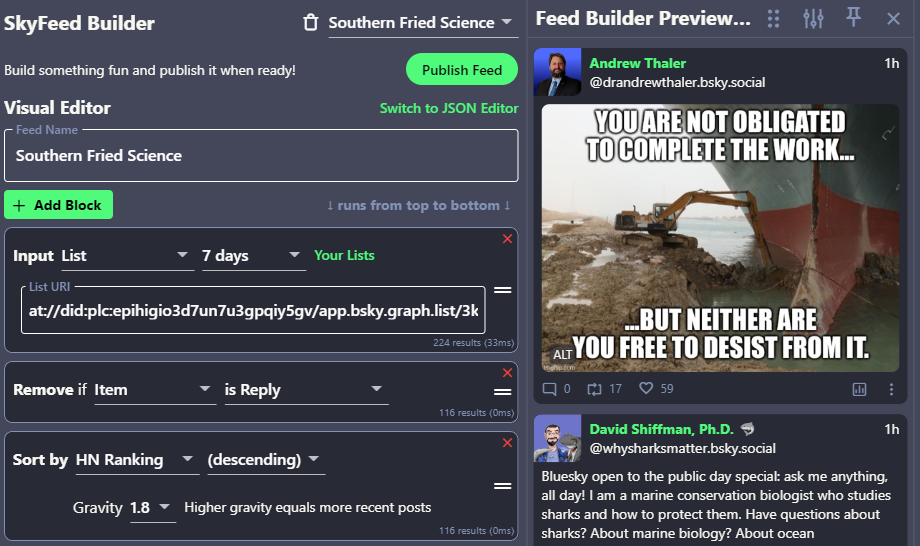Transcript provided below.
Are we finally going to lead with deep-sea mining? We’re going to lead with deep-sea mining. Welcome to the Weekly Salvage.
Flotsam: big news from the bottom of the sea
After being on the verge of production for nearly two decades, the door shut for good on the world’s first deep-sea mine, Solwara I. Located in the waters of Papua New Guinea, this hydrothermal vent system was rich in precious metals like gold, copper, and nickel, but despite the potential value of the prospect, financial, social, and political pressures combined to render development impossible. The government of PNG last week backed a 10-year moratorium on deep-sea mining in their EEZ, and stakeholders are already calling to make the moratorium permanent.
If you’re wondering where the push for deep-sea mining is coming from, well, the answer is batteries, windmills, and solar panels. Next-generation renewable power still demands a ton of resources. Be honest, when was the last time you even thought about where your tellurium came from?
And you know, everyone always shows photos of the rocks, which is fine, but Solwara I is a pretty amazing ecosystem, so check out these snails. They don’t have digestive systems, they just suck energy directly from the vent effluent and symbionts that live inside their gills turn it into food.
But it’s not all good news for the seafloor. Last Tuesday, the US Bureau of Land Management released their final Environmental Impact Statement for drilling on the coastal plain of the Arctic National Wildlife Refuge. This sets the stage for the government to begin selling drilling leases in 1.5 million acres of the Refuge. Americans aren’t taking this move lying down. Several legal challenges have been lodged against the BLM and the House of Representatives has passed a bill to stop the drilling.
This is a fight that will likely play out for years.
Fortunately, we won’t be fighting alone. Friday saw the largest climate change protest in history, as millions of students and their supporters joined Greta Thunberg in the Global Climate Strike. Unprecedented crowds gathered on every continent to demand action on climate change before we pass the point of no return. Thunberg herself led the protests in New York, after testifying at the US Congress. The embarrassingly ill-prepared representative Garret Graves reminded us all why we’re putting our faith in the next generation as he snorted out a series of disingenuous arguments that left the teenage activist unphased.
Jetsam: what bubbled up this week
Amazon announced Thursday that the company was making a massive new commitment to fight climate change after thousands of Amazon workers threatened to walkout to protest the company’s cozy relationship with the fossil fuel industry. Bezos also announced that Amazon has placed an order for 100,000 Rivian electric vehicles to build out its electric delivery fleet. Which, I mean, Rivians are pretty cool cars.
The world’s largest offshore wind turbines are coming to Maryland and New Jersey. These big boys stand 853 feet tall and will generate 12 megawatts of power. On the other side of the pond, the world’s largest offshore wind farm is poised to produce power at rates cheaper than coal.
Meanwhile, TunaBot! It’s a robot. It swims like a fish. It can keep up with a tuna. Just enjoy it.
The US is getting a new regional-class research vessel, and it’s going to be homed at LUMCON, in Terrebonne Parish, Louisiana. The new RCRV is a major addition to America’s research fleet and will be the only research vessel of its size based in the Gulf of Mexico.
Do you like the internet? Well then I have some good news for you. The internet may be a series of tubes, but those tubes are mostly underwater as trans-ocean cables criss-cross the globe. As the Arctic warms, new passages through the sea ice mean more opportunities to lay subsea cables in the Arctic.
Man, this week was really grim on technology.
Lagan: science news that’s peer-reviewed
So here’s one of many tricky things about figuring out how deep-sea mining is going to impact the ocean: we just don’t know very much about the animals that live there. And we know especially little about reproduction and larval development because abyssal toddlers are really hard to find. In The secret life of deep-sea shrimps: ecological and evolutionary clues from the larval description of Systellaspis debilis, a team of researchers from Portugal successfully reared a Mediterranean deep-sea shrimp for the first time. So check out the open access paper at PeerJ.
Driftwood: what we’re reading on dead trees
This week we’re reading The Oyster War by Summer Brennan. Folks, the politics of oysters are wild. I remember sitting in on one fisheries meeting where the workshop lead commented that it had been a good year because no one was shooting at each other, yet. Oysters are serious business and this is a great look inside the sometimes shady world of oystering.
Thanks for watching. Don’t forget to click that like button, ring the ship’s bell, and hit subscribe. If you want to see more of the Weekly Salvage, consider supporting me on Patreon at the link over there.
